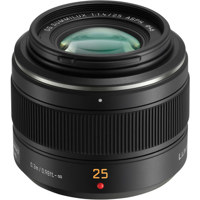While surfing the web for interesting stuff to share with my readers, I found a very innovative camera strap. The BlackRapid R-Strap caught my attention. When going to their site blackrapid.com, I noticed they had a Seattle address. Since I live in the Pacific Northwest, I decided to pay them a visit for my blog.
 After contacting the Chief Marketing Officer, K. Francesca Lukjanowicz, I set up a meeting. She met me at the office in the Fremont District of Seattle. She explained to me that the owner Ron Henry was a working photographer who had a flash of brilliance about camera straps. He was tired of straps sliding off his shoulder, neck aches, tangled and fumbling around. He designed a better camera strap, by redistributing the weight of camera and making the camera available quick for shooting. She said that the company was now distributing in 50 countries.
After contacting the Chief Marketing Officer, K. Francesca Lukjanowicz, I set up a meeting. She met me at the office in the Fremont District of Seattle. She explained to me that the owner Ron Henry was a working photographer who had a flash of brilliance about camera straps. He was tired of straps sliding off his shoulder, neck aches, tangled and fumbling around. He designed a better camera strap, by redistributing the weight of camera and making the camera available quick for shooting. She said that the company was now distributing in 50 countries.
Ron then met me and explained the concept of the strap. By having the camera hang upside down being held by the tripod socket, the camera is always ready to maneuver into position at a moments notice via a sliding connector that allows the camera to move freely while the strap stays put. By using the tripod socket, the strap can be attached to heavy long lenses as well. The R-Strap utilizes hardware that is engineered to facilitate shooting speed by enabling the camera to glide smoothly up the strap from its upside-down resting position. Stress on the connection between the body and the lens is reduced since the strap attaches to the lens rather than to the camera body.
He gave me the RS-7 to tryout. I have to say I have used it on two shoots and find it is very helpful. The strap is constructed of ballistic nylon for extreme durability. With the camera at my hip, I was able to maneuver easily through the shoot, carrying other gear and simply liked having have both hands free. When I was ready to shoot, the camera connector quickly glides up the strap into shooting position. It is as simple as, grab, glide, shoot.
I have always liked having a camera strap on my camera whether still or video. Now that we have still cameras that shoot video we have only one camera, it still needs a strap. Other shooters have not liked using straps. I have found that I can stretch out the strap and have a more stable platform shooting video handheld with a rig.
Their complaint is sometimes the strap gets in the way. Having the fastener in the tripod socket, it is easy to remove the strap when on my slider or tripod. I just screw the fastener back in to use the strap again. Simple.
I interviewed Ron at his office and he explains how to used that strap and the different models that are for sale.
(The iPhone is mine. Like the nifty backing?)














 “Digital camera technology has just taken a huge leap forward with the development of a microdisplay panel that's millions of pixels beyond what is currently used in the highly detailed electronic viewfinders of Fujifilm's most recent X-series cameras (
“Digital camera technology has just taken a huge leap forward with the development of a microdisplay panel that's millions of pixels beyond what is currently used in the highly detailed electronic viewfinders of Fujifilm's most recent X-series cameras ( Multicam
Multicam Description
Description Olympus Imaging Corp. and Panasonic Corporation jointly announced the Micro Four Thirds System standard in 2008 and have since been working together to promote the standard. Now we are pleased to announce that three more companies have recently declared their support for the standard and will be introducing products compliant with the Micro Four Thirds System standard.
Olympus Imaging Corp. and Panasonic Corporation jointly announced the Micro Four Thirds System standard in 2008 and have since been working together to promote the standard. Now we are pleased to announce that three more companies have recently declared their support for the standard and will be introducing products compliant with the Micro Four Thirds System standard. A Japanese company established in 1977 that designs and develops professional video equipment and measurement/analysis-related equipment. Well known for developing the world's first programmable signal generator and the Ultra HDTV image processor devices used at Expo 2005 Aichi, Japan.
A Japanese company established in 1977 that designs and develops professional video equipment and measurement/analysis-related equipment. Well known for developing the world's first programmable signal generator and the Ultra HDTV image processor devices used at Expo 2005 Aichi, Japan. A Japanese company established in 1950 that designs and develops interchangeable SLR camera lenses, lens units for surveillance, as well as ultra-precision optical components based on the integration of advanced optical, electronic and precision machinery engineering technologies.
A Japanese company established in 1950 that designs and develops interchangeable SLR camera lenses, lens units for surveillance, as well as ultra-precision optical components based on the integration of advanced optical, electronic and precision machinery engineering technologies. Shawn Nee, 35, works in television but hopes to publish a book of photographs. Shane Quentin, 31, repairs bicycles but enjoys photographing industrial scenes at night. The Los Angeles County Sheriff’s Department probably wishes that both would find other hobbies. Herewith a story of today’s inevitable friction between people exercising, and others protecting, freedom.
Shawn Nee, 35, works in television but hopes to publish a book of photographs. Shane Quentin, 31, repairs bicycles but enjoys photographing industrial scenes at night. The Los Angeles County Sheriff’s Department probably wishes that both would find other hobbies. Herewith a story of today’s inevitable friction between people exercising, and others protecting, freedom. Quentin, who finds aesthetic — and occasional monetary — value in photographs of industrial scenery at night, was equally persistent when deputies ordered him to stop taking pictures, lest they put his name on a troublesome FBI list. He was on a public sidewalk, using a large camera on a tripod, photographing an oil refinery at 1 a.m. He has a master’s degree in fine arts from the University of California at Irvine, so there.
Quentin, who finds aesthetic — and occasional monetary — value in photographs of industrial scenery at night, was equally persistent when deputies ordered him to stop taking pictures, lest they put his name on a troublesome FBI list. He was on a public sidewalk, using a large camera on a tripod, photographing an oil refinery at 1 a.m. He has a master’s degree in fine arts from the University of California at Irvine, so there.